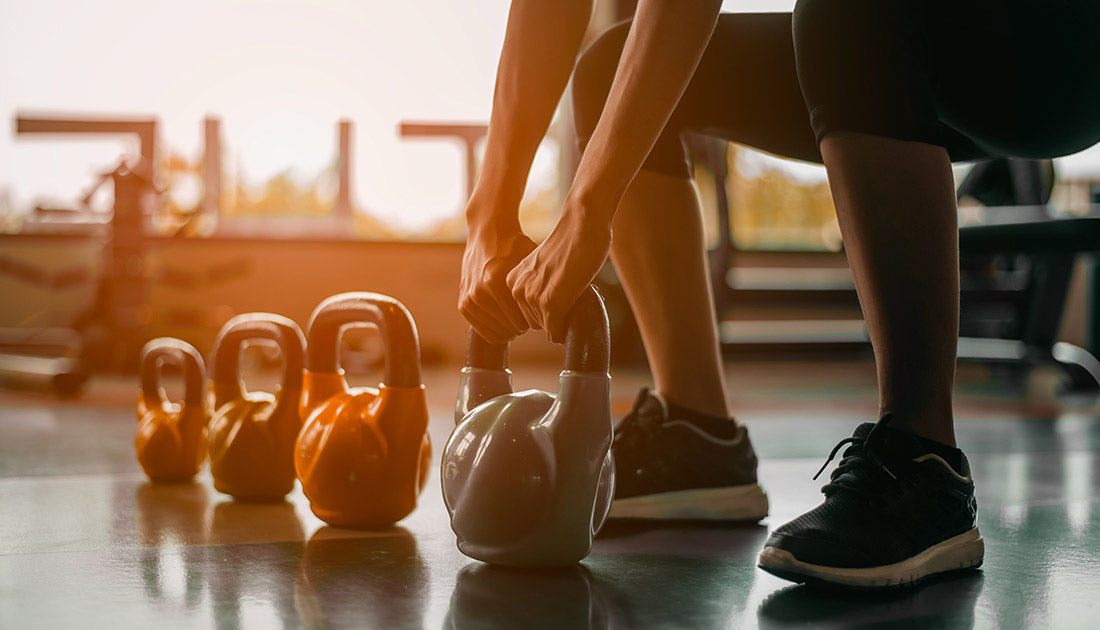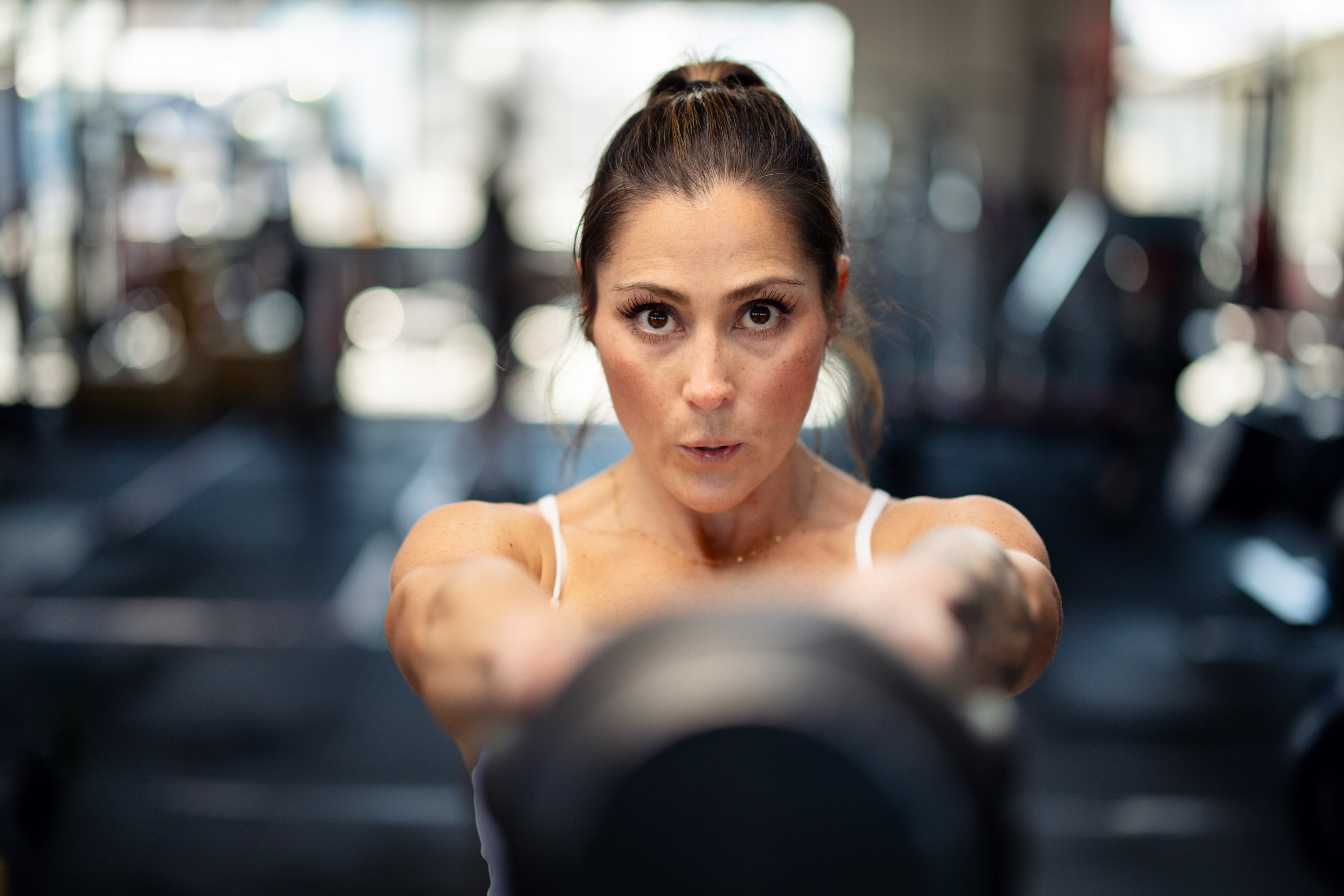When it comes to building muscle and getting results, there are a near-infinite number of ways you can go about accomplishing your goals, though some methods are much more efficient than others.
Supersets have been a staple of gym routines for decades and were favorites of many golden-era bodybuilders.
Today, we zero in on supersets -- what they are, who can benefit from them, what are good supersets to use in your workouts, and much more.
Let’s start at the top!
What is a Superset?
A superset describes two exercises that are performed back-to-back with little to no rest between them.
Typically, the two exercises involved in a superset train opposing muscle groups -- chest and back, quads and hams, biceps and triceps.
Classic examples of supersets are bench press and bent-over row, pull up and overhead press, leg extension and leg curl, bicep curl and triceps pushdown.
While supersets most commonly involve agonist-antagonist pairings (e.g., chest and back), they're not solely relegated to opposing muscle group combinations.
Supersets can also be structured in a fashion such that they hit the same muscle group, a la dips followed by push-ups. Note, supersets in which both exercises target the same muscle group is also frequently referred to as "compound sets."
Supersets can also involve two unrelated muscle groups, such as performing a set of squats followed by a set of bicep curls.
For this article, a superset will describe the classic agonist-antagonist pairing (e.g., chest and back, quads and hams, biceps and triceps).
What are Supersets Good For?
Let's be honest. We all want to get results, but we all don't have hours to spend in the gym each day banging out 2-½ hour workouts.
Here's where supersets shine.
They allow you to condense your training (i.e., save time) and complete total volume (which is related to greater muscle growth) without sacrificing performance.[1,2]
Traditional resistance training workouts have you perform a set, rest between 1-3 minutes, and then do your next set. Superset workouts allow you to attack two different muscle groups in that same amount of time without a drop in performance. There is some research to suggest that supersets may improve your performance.[3]
Added Cardiovascular Conditioning and Calorie Burning
Supersets also provided a metabolic benefit due to the increased workload. They decreased rest interval, elevating heart rate and leading to more calorie burning per session than traditional straight set resistance training protocols.
This can be of benefit to those short on time and those looking to lose weight, all the while still building muscle.
Symmetry
Super setting opposing muscle groups also helps ensure you're doing an equivalent amount of work for your body, thereby helping reduce the chance for muscle imbalances.
We've all seen the gym bros walking with the Quasimodo-Esque posture, who has spent way too much time benching and not enough time rowing and pulling.
Aside from aesthetics, having such gross muscle imbalances also increases the risk for injury.
Crazy Pumps!
Anyone who's ever done a chest and back workout or a biceps and triceps workout know just how precious of a pump you get supersetting opposing muscle groups.
One muscle group rests while the other works. Alternate back and forth, and you flood the muscle bellies with blood, giving one of the best pumps you'll ever have. And, for an even more significant, nastier pump, make sure to take a scoop of pre-workout before your training session!
Note: One thing to keep in mind when it comes to training with supersets is that while they are a fantastic option for building muscle (especially those with limited time to train), they are not the best option for building raw strength.
To maximize strength development, you need to be fully recovered between your sets (~3-5 minutes rest between sets) which is best accomplished by the traditional straight set resistance training program structure.
Examples of Supersets
While there are few “hard and fast” rules when it comes to supersets (short of performing two exercises in succession with little rest between them), there are some “best practices” to keep in mind.
For starters, it helps to match movement planes.
For instance, if you're doing a horizontal press (e.g., bench press or push up), you want to pair it with a horizontal pull (e.g., cable row, bent over row, inverted row, seal row, etc.).
Matching movement planes ensures that the muscles opposite those worked in the first movement are hit more directly. This promotes greater muscle balance and helps ensure you’re getting equal training volume between agonist-antagonist muscle groups.
Something else to be cognizant of is how much rest you’re taking between exercises and supersets.
Traditionally, supersets are done with virtually no rest between exercises (only the amount of time it takes to move from your 1st exercise to your 2nd one). This is perfectly acceptable and can work for individuals who are in excellent cardiovascular condition and those who have novice-intermediate levels of strength.
However, the stronger you get, the more taxing each set becomes on account of the level of exertion you give to an exercise and the sheer amount of weight you are lifting.
As such, don’t be married to the concept that you “have” to move immediately from the 1st exercise to the 2nd in less than 30 seconds.
For the very strong members reading this (or those who are still working on their cardiovascular conditioning), take 30-60 seconds between your first and second exercises. You won't be any worse for wear, and you won't be "wasting" your workout. You will be able to convey greater intensity, focus, and performance to the exercise, ultimately bringing about greater gains in the long run.
Now, with all of that said, here are some of our favorite superset pairings to use:
- Overhead Press + Pull Up
- Seated Dumbbell Press + Lat Pulldown
- Incline Chest Supported Row + Incline Dumbbell Press
- Incline Barbell Press + T-Bar Row
- Dips + Chin Ups
- Decline Push-Ups + Inverted Rows
- Dumbbell Curls + Overhead Tricep Extensions
- Rope Hammer Curls + Rope Tricep Pushdowns
- Leg Extensions + Leg Curls
- Leg Curls + Hack Squats
- Front Raise + Straight-Arm Lat Pulldown
- Leg Press + Romanian Deadlift
- Pec Dec + Reverse Pec Dec
Takeaway
Supersets are an incredibly effective option for building muscle, especially for those with limited time to train or limited access to equipment.
If you're tired of the same old set and rep schemes, incorporating supersets into your training program can help inject some excitement and challenge, which can help you push harder and get more results.
Just be aware that it will take some time to get used to performing supersets if you're not used to performing supersets, both mentally and physically. But, once you acclimate, you'll soon find that supersets are an incredibly efficient and effective way to train. Plus, they give you one hell of a pump during your workouts.
And, if you need that little extra "boost" to push harder, last longer, and ultimately build more muscle during your workouts, make sure to check out top-rated supplements, including our best-selling pre-workout Steel Pump® and the “king” of sports nutrition, Creapure® Creatine Monohydrate.
References
- Weakley JJS, Till K, Read DB, et al. The effects of traditional, superset, and tri-set resistance training structures on perceived intensity and physiological responses. Eur J Appl Physiol. 2017;117(9):1877-1889. doi:10.1007/s00421-017-3680-3
- White, Jason B.. “Effects of Supersets Versus Traditional Strength Training Methods on Muscle Adaptations, Recovery, and Selected Anthropometric Measures.” (2011).
- Robbins D.W., Young W.B., Behm D.G. The Effect of an Upper-Body Agonist-Antagonist Resistance Training Protocol on Volume Load and Efficiency. J. Strength Cond. Res. 2010;24:2632–2640. DOI: 10.1519/JSC.0b013e3181e3826e.

